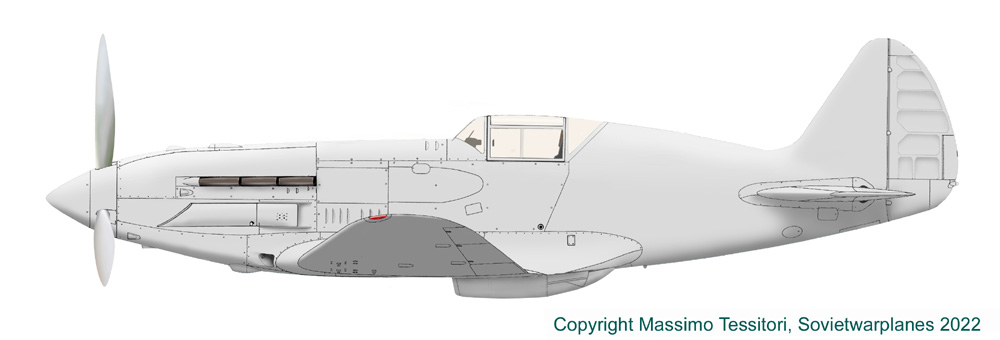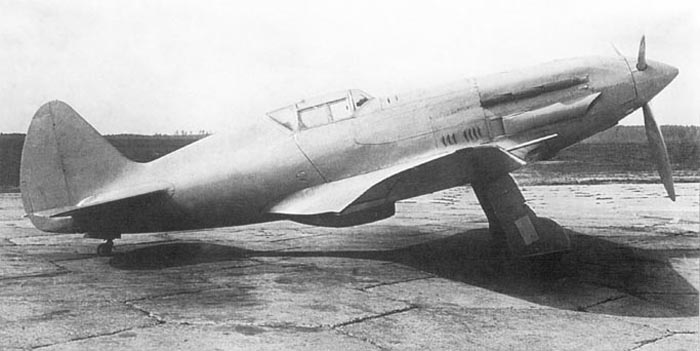
Left:
I-200 no. 02, the second prototype of the MiG family.
It was externally distinguishable from the I-200 no.1 for:
- oil radiators on both sides;
- slots in front of the windshield.
It was externally distinguishable from production MiG-1 because of:
- the shorter canopy, with the hood hinged on the right side;
- slightly different oil cooler inlets, of the heat shields behind the exhaust pipes and other minor details;
- predisposition for guns installations with recessed outlets (instead than partially protruding as on MiG-1 and 3).
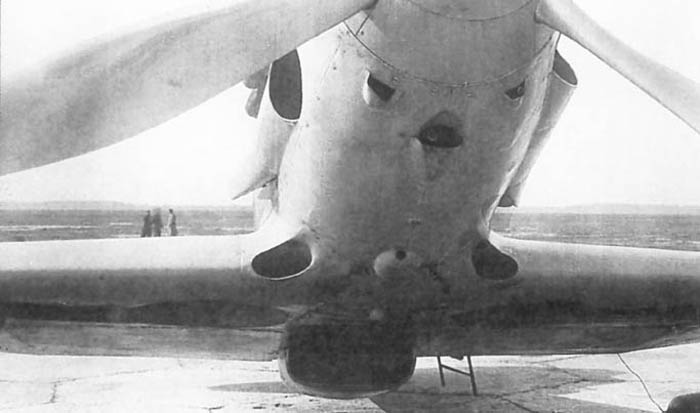
A detail of the nose.
This configuration of the oil cooler was on both sides as on all series aircraft, but with sharper shape. Note the asymmetrical inlet shapes, chosen to optimize the access of air moved by the propeller. The asymmetry was preserved on production MiG-1 and MiG-3, although with a slightly different shape.
Note the frontal section of the oil cooler. Seems that a rectangular section of the fuselage in front of the inlet was adjustable and entered inside the fuselage to enlarge the inlet when required.
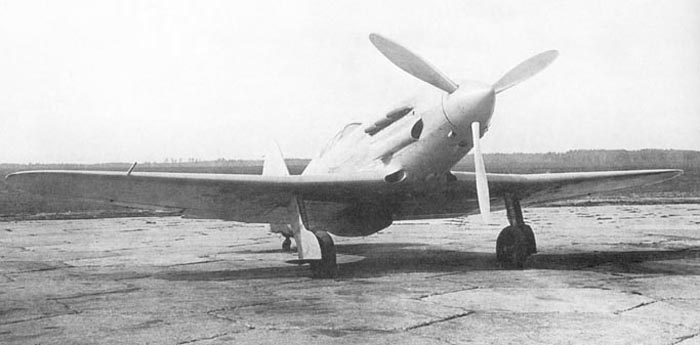
The prototype was painted with an unknown light color, usually represented as light grey on drawings, but it could be something different and even a bright color.
Some voices say that a technician recalled that the I-180 prototype was painted with the same pinkish grey utilized on civilian planes (?); the memoirs of another technicianof MiG-3 maintenance said that the inside could have been repainted with different colors including one similar to skin. Although he descriptions of the colors could be compatible and possible por prototypes, none really knows what was their real color.
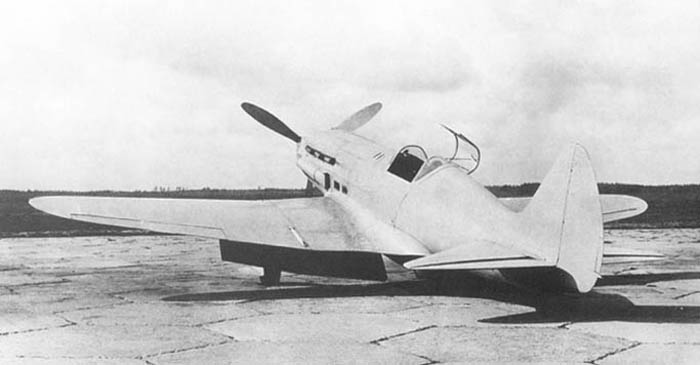
Image from the rear, showing the hood hinged on the right side as on Me-109s.
The object over the left wing is a thermometer for air temperature during test flights.
Under the lowered flap under the wings, we can see the folded semicircular flap for the main wheel cover, similar to that of I-16 and installed even on production MiG-1s; it was often removed because it acted as an aerodynamic surface when the landing gear was lowered, creating difficulties to the pilot.
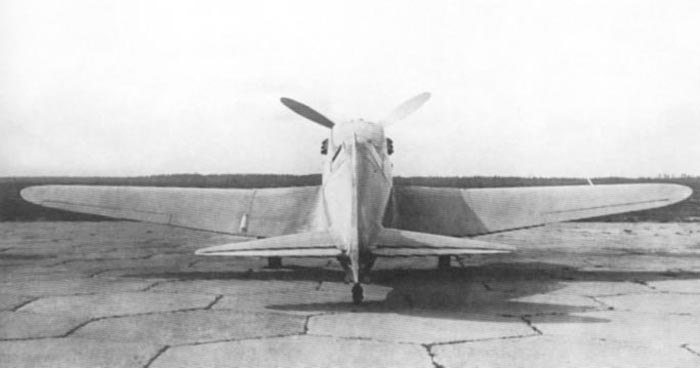
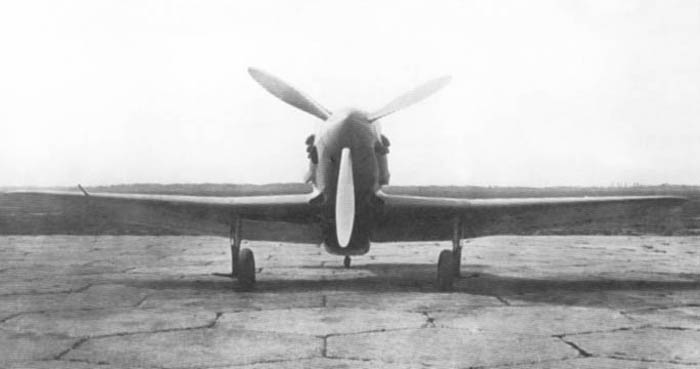
The aircraft differs from early type MiG-3 for:
- the length was still 8,15 m;
- the canopy conformation was different; an one-piece windshield, a rightward opening shield, a short clear rear part;
- bulges and intakes over the nose were absent; only the lower bulge under the nose, containing the cooler and lubrification pumps, was present;
- there was a predisposition for guns installations with recessed outlets (instead than partially protruding as on MiG-1 and 3);
- the central air inlet under the nose was smaller than on MiG-3;
- there were some minor differences in panels division, particularly the exhaust shields and the panels with 7 slots;
- the tail wheel door had not any bulge nor window;
- the underwing removable panels for guns pods ammo were absent;
- the supercharger intakes at the wingroots were different than those of MiG-3, particularly for having a shorter upper lip;
- the water radiator fairing was different to those of MiG-3;
- the main landing gear were different from MiG-3; they had smaller wheels, different doors shape, and foldable wheel flaps as on I-16, instead of the wheel doors as on MiG-3;
- the oil cooler was installed on both sides, but its inlet lip was shorter and sharper than on MiG-3;
- the aircraft looks painted light grey overall;
- the prop blades were unpainted alumimium.
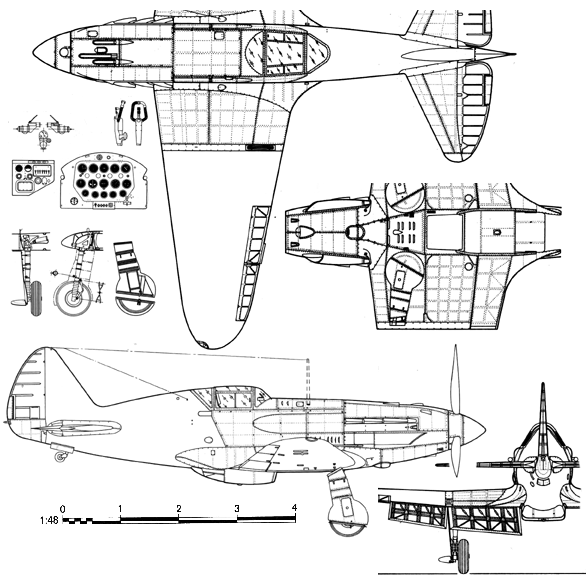
Here are some drawings of I-200 nr.2.
For more complete drawings, see the site http://www.ipclub.ru/arsenal/hardware/draws/

Here is a detail of the aircraft after a crash.
The shape and detail of the wheel bays is evident; it remained the same on production MiG-1s.
In front of the cooler intake, we can se a rectangular ramp, probably adjustable, to increase the airflow to the cooler.
Below: profile of I-200 n.02. It was drawn as light grey overall, but the color could be different.
